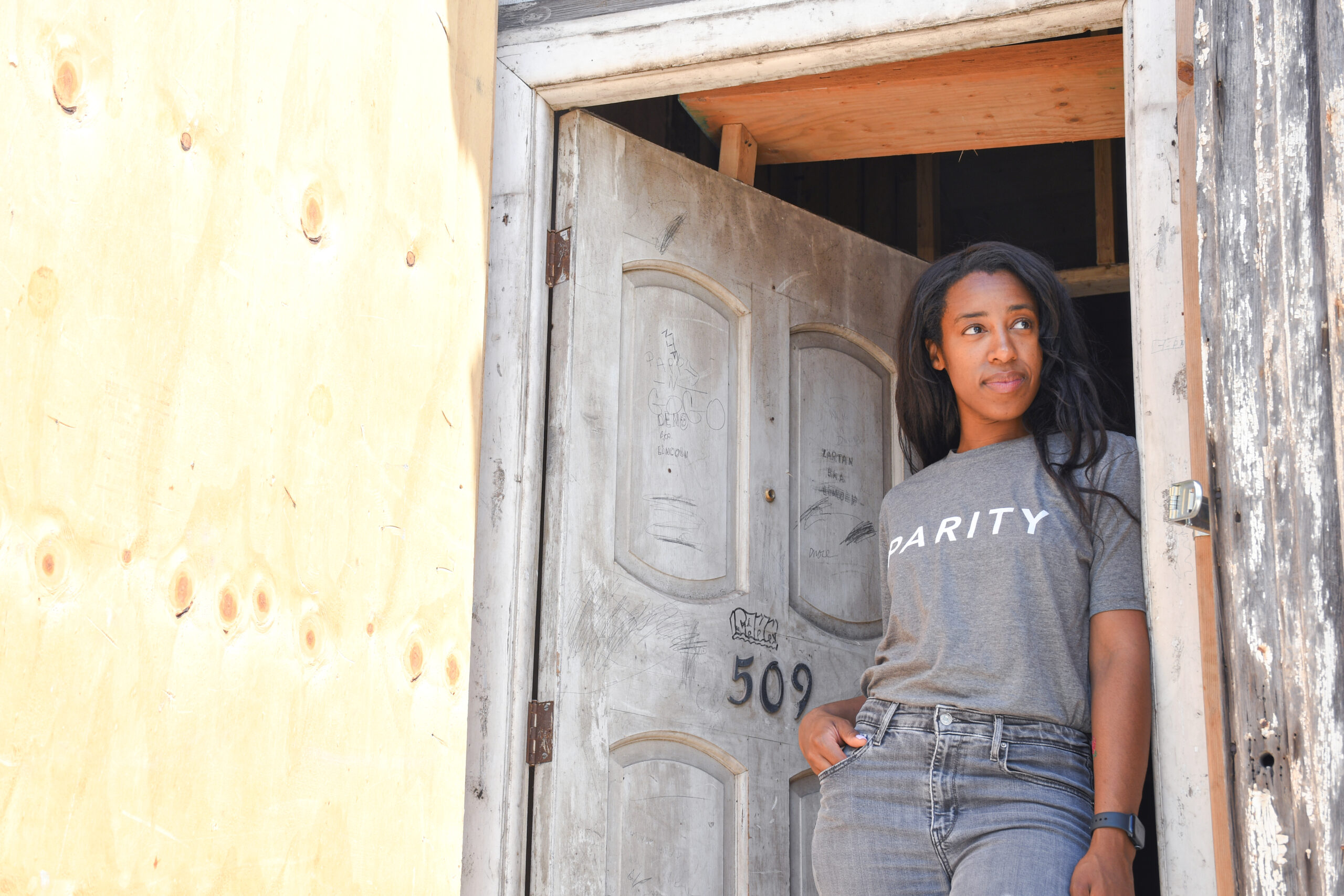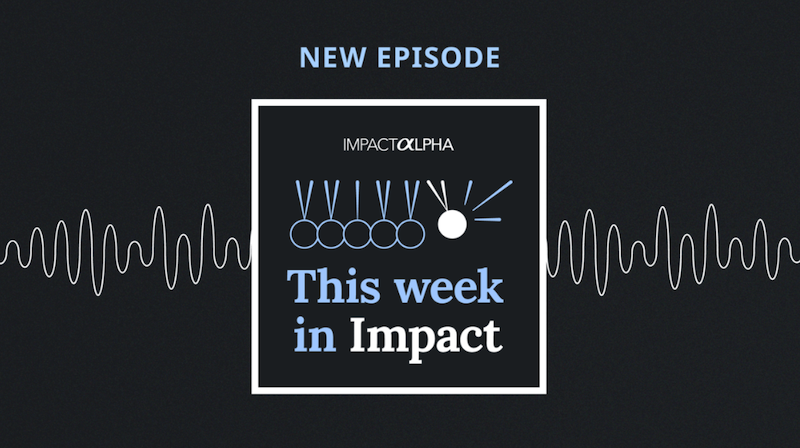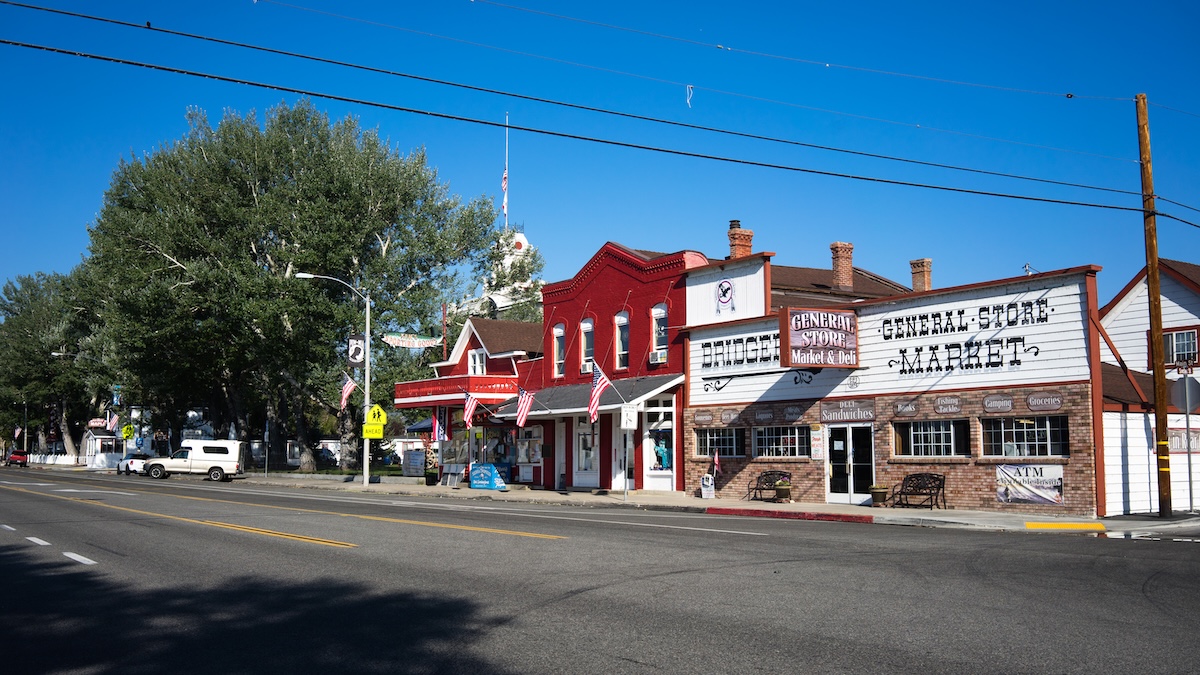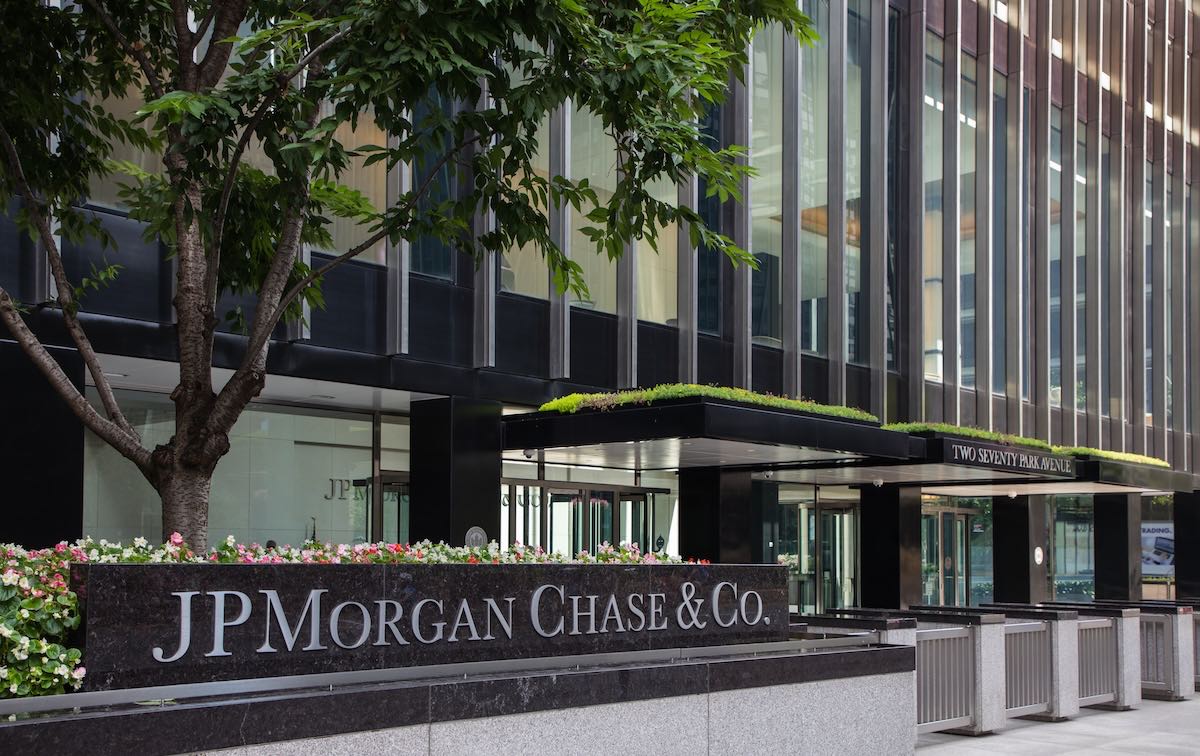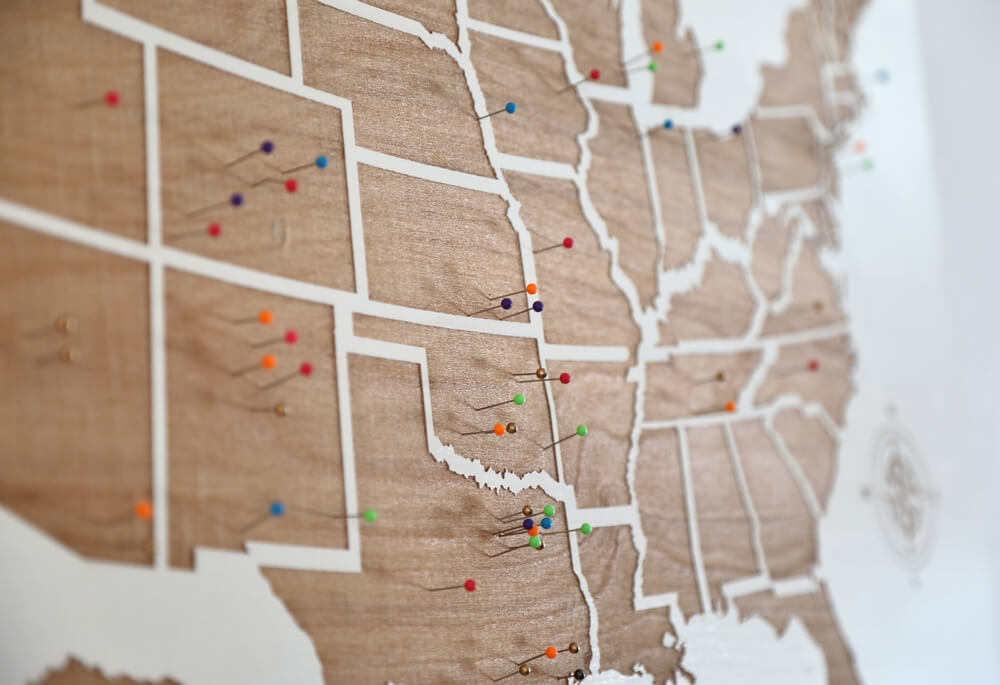Editor’s note: In this three-part series on neighborhood revitalization strategies, ImpactAlpha’s Roodgally Senatus takes us on a visual tour of three strategies that are restoring vacant houses in West Baltimore to foster home ownership and community wealth in disinvested neighborhoods.
On a warm afternoon in June, workers were busy setting up new wiring in a dilapidated rowhouse in Baltimore’s Harlem Park neighborhood. The historic majority-Black neighborhood in West Baltimore, part of the city’s “Black Butterfly,” was once a thriving Black middle-class community where doctors, pastors and business owners lived.
Today, it is dotted with 15,000 vacant buildings and 23,000 vacant lots.
Bree Jones is the founder of Parity, a nonprofit housing developer that is attempting to buy up an entire block on N. Carrollton Ave, off Harlem Park’s main corridor. Parity is looking to renovate the houses and sell them, cheap, to people who share Jones’ goal of generating community wealth and creating thriving neighborhoods once more.
“We pretty much will purchase anything in Harlem Park, pretty much anything on this block, or any of the blocks we’re working on,” she said. “We will buy sight unseen.”
As she spoke, Jones’s team was putting the finishing touches on the house next door, the third home Parity has fixed up in Harlem Park so far. The developer hopes to acquire and fix up 20 homes a year, until the neighborhood regains its vibrancy. She pointed to the rows of vacant homes on the street.
“This model only works if you are purchasing at scale and if you’re purchasing in concentration,” Jones says.

Disinvestment, disrepair and dilapidation
Parity is one of several social enterprises buying back the blocks of blighted and mostly-abandoned rowhomes, part of Baltimore’s rotting stock of vacant buildings and lots. The organizations are seeking to drive equitable homeownership and community revitalization – without displacement.
The rowhouse-by-rowhouse and block-by-block efforts provide lessons for restoring other once-thriving areas.
Jones quit her Wall Street job and moved from New York City to Baltimore in 2018. It didn’t take long for her to fall in love with Baltimore, a city with a deep and often overlooked history of Black excellence.
“It’s also a city with a really deep history of racial discrimination, specifically through the practice of redlining,” Jones says. The effects of such disinvestment are not unique to Baltimore, but the exclusionary practices “really took a toll on the city,” she says.
Jones got to Baltimore with a decade of experience studying how housing markets work. She continued that education as a cohort member of Innovation Works, a community-focused social enterprise accelerator in Baltimore. Innovation Works gave Jones a small loan to jumpstart Parity in 2020.
Like the other models highlighted in this series, Parity sees an opportunity to acquire and revitalize some of the tens of thousands of blighted and vacant buildings in Baltimore’s low-income, majority-Black neighborhoods on the city’s western half, known locally as “the Black butterfly.”
Morgan State University associate professor Lawrence Brown coined the nickname in his book, The Black Butterfly: The Harmful Politics of Race and Space in America, which examines Baltimore’s long history of exclusionary policies and how they influenced other cities like St. Louis and Cleveland.

“These were once thriving Black communities that are now areas of deep disinvestment, disrepair and dilapidation, and it’s incredibly difficult to revitalize communities because of the size and the intricacy of the challenges,” Jones told ImpactAlpha during a site visit to Harlem Park.
When Jones went to start Parity, she focused on “people capital” over financial capital. The name Parity was drawn from the nonprofit’s mission to help close the racial wealth disparity between White and Black households.
She said at the time, “I want to live in this neighborhood and I bet there’s 100 other people like me,” she recounted. “Let’s create a groundswell of folks who believe that these neighborhoods have value, and who want to live and own homes there.”
Appraisal gap
West Baltimore wasn’t always on the top 10 list of the most dangerous cities in the US, with high crime and gang violence rates. It was a thriving settlement in the late 1800s for many African Americans who were fleeing the US south after the end of Reconstruction.
Harlem Park became a spiritual and cultural center of West Baltimore, with a growing Black middle-class population buying many of the properties in the neighborhood, despite the remaining White residents putting up a fight to exclude them from purchasing homes. Many native Baltimoreans, mainly White residents, moved back to the eastern side of the city.

By the mid-twentieth century, Harlem Park was a majority-Black working class community with businesses, doctor’s offices and churches. Still, local Black residents faced discrimination in education, employment and housing, with the Federal Housing Administration introducing policy to discourage lending in Harlem Park and other Black neighborhoods in West Baltimore.
As in many other communities of color in US cities, redlining was the downfall of the area’s housing market failure.
Current Black homeowners in Baltimore are still grappling with such negative impacts, including through appraisals that underestimate the value of their homes. Two years ago, Jones helped draft and pass a bill that would provide funds to close the appraisal gap in Baltimore.
This spring, Nathan Connolly and his now-deceased wife Shani Mott sued and won their lawsuit against mortgage lender loanDepot and Shane Lanham, an appraiser hired by the company’s contractor. In the lawsuit, Connolly and Mott claim Lanham appraised their home at $472,000, rather than at its actual $750,000 valuation because the property was Black-owned.
“I never thought of myself as a policymaker,” Jones told ImpactAlpha. “But I am always trying to look at the root cause of the issue.” (see, “‘Policy entrepreneurs’ are scaling up local innovation to drive inclusive growth”).
Today, there are approximately 15,000 vacant buildings in Baltimore. Of that stock, only 1,250 are owned by the city government.

“A lot of those single-family homes may not be owned by the city, but they’re owned by city entities like a housing or a land bank or a land trust,” says Ben McAdams, the former mayor of Salt Lake County. McAdams launched the Putting Assets to Work policy incubator to work with city governments of Atlanta, Cleveland, Annapolis and others to map out and tap into their underutilized real estate.
McAdams says he connected with former Maryland Gov. Martin O’Malley, then the mayor of Baltimore, as the city government was mapping out their vacant real estate.
To support social enterprises like Parity, McAdams told ImpactAlpha that Maryland and Baltimore government leaders “are going to have to consider tax abatements and/or tax increment financing to support reinvestment in these areas, as well as consider additional investments to support fair mortgage lending.”
This year, Maryland Gov. Wes Moore signed a bill that will enable local jurisdictions to impose a higher tax rate on vacant properties in Baltimore. The strategy would allow the city government to repossess vacant homes from owners, who oppose the tax rate increase.
Equity boost
In Harlem Park, Parity has acquired 50 properties, of which 15 are currently under construction; three are completed and tenant ready. Thanks to her community-building efforts, Jones had lined up dozens of potential buyers before Parity even purchased its first property. The buyers are what she calls “legacy residents,” or people who once lived in Harlem Park or whose parents and great grandparents lived there.

Philanthropic funding, mainly from corporate backers like JPMorgan Chase and Bank of America, Truist, PNC and Kaiser Permanente, helps Parity finance the acquisitions and renovations. The nonprofit spends around $350,000 to acquire and renovate each home. The process to renovate a Parity rowhouse, which spans on average about 3,000 square feet, takes roughly two months and a half.
Parity sells the renovated homes to its legacy resident buyers for $280,000 — $100,000 less than the typical appraised value – giving the new homeowners an immediate equity boost.
The windfall comes with some restrictions, however. “Because we put a lot of grant money into the home, they can’t just flip it the next day and take it all out,” Jones says. “But if they adhere to our timelines, 100% of that wealth is theirs.”
Also, when a buyer closes on a home, Parity introduces them to mortgage-lending partners including Bank of America, Truist and PNC to secure a mortgage. Once they close on their mortgage, Parity receives a check from the bank to reinvest in new properties.
To achieve its goal of acquiring and renovating 20 homes a year, Parity is looking to raise up to $5 million in low-interest debt capital.
“I think at that point, we can start to become better positioned to tap into the larger federal grants that would allow us to 10x that because there’s only so much that philanthropy can do,” Jones says.

Parity estimates that subsidies such as the Federal Historic Preservation Tax credit program, can save each of its buyers $80,000 in property taxes over 10 years. “We apply for city and state grants to maintain deep affordability and we have many generous donors who help make this work at scale.”
Today’s interest rates have stressed Parity’s model. “For every 1% increase in interest rates, we would have to put an additional $30,000 of subsidy into the home to keep that same affordability, and that’s just not feasible,” says Jones.
Parity’s workaround: Lease out a portion of the property, such as the first floor, and finance the unit with a line of credit that can be repaid with rental income.
Looking out for Ms. Josephine
Anti-displacement is at the core of its Parity’s strategy to revitalize West Baltimore’s Harlem Park neighborhood.
The nonprofit makes it a priority to help legacy residents get ready for all aspects of their homeownership journey. That includes financial literacy training on property taxes and ownership rights, insurance and mortgages and credit repair.
“We’re not only thinking about renovating existing homes, but we’re also thinking about legacy residents and doing development without displacement,” Jones says. “And making sure that Ms. Josephine, who’s 86 years old and who’s lived in her home since she was three, doesn’t get displaced as the neighborhood begins to heal.”

“We help folks with aging in place, repairs, bills,” says Jones. “We also try to educate folks about the value of the family home.”
There are tens of thousands of owners for the tens of thousands of vacant homes in Baltimore, according to Jones, which makes buying back the block extremely difficult when each home belongs to a different owner.
“You really have to assemble the whole block, you have to assemble the capital, which is incredibly difficult because most lenders don’t see the value in these neighborhoods,” she says.
Some heirs may not realize the value of the home when, say, a grandparent dies. Or they may want to keep the house, but don’t have access to the credit to do needed maintenance.
“We try to educate folks, but also try to connect folks with the resources so that they can inherit the home and it can continue to be a useful asset for the family.”
By buying blocks of rowhomes and selling them to collectives of buyers with a similar culture lens, Parity aims to create communities where residents are free to express their cultures. Cultural displacement happens when “you have neighbors coming in who don’t necessarily appreciate the existing culture.”
“Baltimore is a stoop city,” she says. “We sit on our steps and talk to our neighbors and laugh out loud and play music.”



